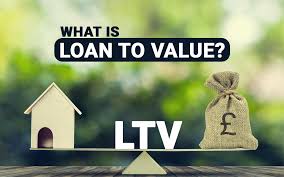What is Loan-to-Value (LTV)?
LTV, short for Loan-to-Value, is a financial ratio that shows how much of an asset’s total value a lender is willing to fund through a loan. It’s expressed as a percentage and is commonly used in lending scenarios like mortgages, equipment financing, and commercial loans.
Lenders assess the value of the asset a borrower wants to finance, and then decide how much of that value they’re comfortable lending. The remaining portion must be covered by the borrower, usually through a down payment or equity contribution.
Why Some Assets Get Higher LTVs Than Others
Assets that are more attractive as collateral—meaning they’re easier to resell, have stable prices, and have a clear and transferable ownership title—tend to receive higher LTV ratios.
For example, real estate typically gets a higher LTV than things like inventory or collectible art, because it’s easier to value, has an active resale market, and its ownership records are more standardized.
Quick Recap: Key Points About LTV
- Definition: LTV shows the portion of an asset’s value a lender is willing to finance with debt.
- Formula:
LTV (%) = (Loan Amount / Asset Value) × 100 - High LTVs are common for assets that are low-risk and have a strong resale market.
- LTVs vary based on lender type, asset type, and market competition.
How Do Lenders Calculate LTV in Practice?
While the basic LTV formula is straightforward, lenders may arrive at the asset’s value differently depending on the type of loan and the risk factors involved. Let’s break down some real-world scenarios:
1. Minimum Equity Requirement (Home Loans Example)
When someone buys a house, the lender might require them to contribute at least 5% of the home’s price. That means the lender will finance up to 95% of the purchase price, resulting in a maximum LTV of 95%.
2. Risk Buffer (Business Equipment Loans)
A commercial borrower wants to finance equipment. The lender, knowing that they may have to sell the equipment at a 25% discount in case of default, caps the loan at 75% of the equipment’s value. This creates a 25% buffer to protect against loan losses.
3. Cash Flow-Based Lending (Commercial Property Loans)
For income-generating properties, lenders focus on future rental income. They calculate the present value of expected future cash flows using interest rates and debt service coverage requirements. That result becomes the maximum loan amount. When compared to the property’s appraised value, this gives the LTV.
Why Do Lenders Care So Much About LTV?
Lenders make money from interest, but they also worry about risks—like what happens if a borrower can’t repay. If the borrower defaults, the lender might need to sell the asset to recover the unpaid loan.
Having a lower LTV means the asset is worth more than the loan itself, providing a cushion. This makes it more likely that the lender will recover the full loan amount even if the asset is sold at a discount.
Another reason for limiting LTV is borrower commitment. When borrowers contribute their own funds—called having “skin in the game”—they’re more likely to take the loan seriously and avoid default.
What Does “Value” in LTV Really Mean?
Lenders don’t always use the same method to determine an asset’s value. Here are three common approaches:
1. Book Value
Book value is the amount recorded on a company’s balance sheet. It works well for assets like accounts receivable (A/R), but not as well for long-term assets like machinery, which depreciate over time.
2. Purchase Price or Cost
When financing brand-new equipment, the invoice price often serves as the asset’s value. However, if the equipment is used or already owned, a purchase price isn’t relevant—and an appraisal may be required instead.
3. Appraised Value
Appraisals are expert assessments used to estimate the fair market value of assets. They are particularly important for used equipment and commercial properties. Appraisals often include:
- FMV (Fair Market Value) – The price the asset would sell for in a normal sale.
- OLV (Orderly Liquidation Value) – The expected sale price in a time-sensitive, but organized, auction.
- FLV (Forced Liquidation Value) – The expected price in a distressed, fast-sale situation.
Understanding which value the LTV is based on is essential. For example, 75% of FMV is much higher than 75% of FLV.
Common LTV Ranges by Asset Type
LTV limits vary across industries and asset types:
- Cash Collateral: Often allows up to 100% LTV.
- Residential Property: Typically allows up to 95% LTV.
- Commercial Real Estate: Usually supports up to 75% LTV.
- Inventory: Riskier to resell, so often limited to 50% LTV.
- Luxury or Niche Assets: Like fine art or collectible cars, these may only qualify for 25–30% LTV due to their illiquid and niche markets.
How Market Competition Affects LTV Policies
Lenders don’t operate in a vacuum. While they prefer to limit risk by offering lower LTVs, competitive pressure—especially from fintechs and rival banks—can push them to increase their LTV offerings to attract borrowers.
As a result, financial institutions must balance prudent lending with market demands. They regularly review their credit policies and adjust their risk tolerance to stay competitive, all while protecting themselves from potential losses.
If you’d like, I can also create a summarized infographic version or simplify this even further for a general audience. Want that next?
Join Gen Z New WhatsApp Channel To Stay Updated On time https://whatsapp.com/channel/0029VaWT5gSGufImU8R0DO30


